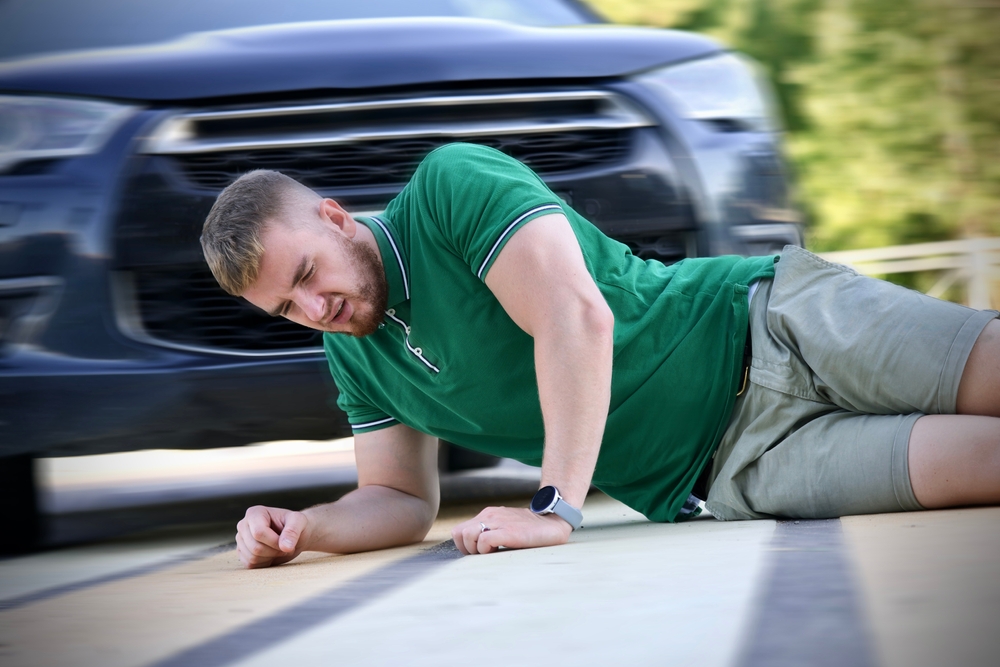In a bustling city like Minneapolis, pedestrian accidents are unfortunately a common occurrence. From busy intersections to quiet neighborhood streets, these incidents can lead to life-altering injuries or even fatalities. But when a pedestrian is struck, the next question is often: Who is liable?
Determining fault in a pedestrian accident isn’t always straightforward. Understanding the legal nuances of liability in these cases is essential, especially for victims seeking compensation for their injuries. As a Minneapolis personal injury attorney, we help clients navigate the complexities of liability and fight for the compensation they deserve.
Why Pedestrian Accidents Happen in Minneapolis
Despite citywide efforts to enhance walkability and safety, pedestrian accidents persist. According to the Minnesota Department of Public Safety, more than 600 pedestrian crashes occur statewide each year, with dozens of fatalities and hundreds of injuries. In Minneapolis, these incidents often happen due to a combination of factors, including:
- Distracted or impaired driving
- Failure to yield at crosswalks
- Speeding in residential or downtown zones
- Poor visibility or inadequate street lighting
- Pedestrians crossing outside designated crosswalks
These accidents commonly occur in urban areas where vehicle and foot traffic intersect frequently—places like Hennepin Avenue, Lake Street, and near the University of Minnesota campus. In most cases, fault must be carefully examined based on evidence, witness accounts, and traffic laws.
The Legal Definition of Liability in Pedestrian Accidents
In legal terms, liability refers to the responsibility for an accident or injury that results from an act or omission. In pedestrian accident cases, liability often falls on one or more parties whose negligent or reckless behavior caused the incident. Minnesota operates under a comparative fault system, which allows for shared liability between a driver and a pedestrian.
Under Minnesota Statute § 604.01, a person injured in an accident can still recover damages even if they were partially at fault, as long as their percentage of fault is 50% or less. This system plays a significant role in pedestrian accident claims, especially when both the driver and the pedestrian made errors in judgment.
Common Scenarios and Who Might Be Liable
To understand liability more clearly, let’s break down a few common pedestrian accident scenarios:
1. A driver runs a red light and hits a pedestrian in a crosswalk
In this case, the driver is clearly at fault. Traffic laws require vehicles to stop for pedestrians in crosswalks, especially when traffic signals grant the pedestrian the right of way. This is a textbook example of driver negligence.
2. A pedestrian jaywalks across a busy street and is hit by a car traveling the speed limit
Here, liability may be shared. The pedestrian acted illegally by crossing outside of a designated crosswalk, but the driver still has a duty to avoid hitting people on the road when possible. If it’s found that the driver could have avoided the collision, they may still bear partial fault.
3. A distracted driver texting on their phone hits a pedestrian on the shoulder of the road
This scenario heavily favors the pedestrian. Distracted driving is a form of negligence, and drivers are expected to remain alert to their surroundings at all times.
4. A pedestrian walks into traffic at night wearing dark clothing with no reflective gear
While drivers have a responsibility to watch for pedestrians, visibility plays a role. A jury could determine the pedestrian was partially at fault for failing to make themselves visible in dark conditions.
Proving Liability After a Pedestrian Accident
Establishing liability is critical for any personal injury claim. To do so, a Minneapolis personal injury attorney will gather and analyze evidence such as:
- Police reports
- Traffic camera or surveillance footage
- Eyewitness statements
- Driver phone records or dash cam video
- Medical records and injury reports
- Accident reconstruction analysis
The goal is to show that the driver (or other party) acted negligently and that this negligence directly caused the pedestrian’s injuries. In some cases, liability may extend beyond the driver. For example, a municipality may share fault if a broken traffic signal or poor street design contributed to the crash.
How Comparative Fault Impacts Compensation
Minnesota’s comparative fault rule directly affects how much compensation a pedestrian can recover. If a pedestrian is found to be 30% at fault for the accident, their damages award will be reduced by 30%.
So, if the total damages amount to $100,000, the pedestrian would receive $70,000. However, if the pedestrian is found more than 50% responsible, they may be barred from recovering damages altogether.
This is why working with a qualified attorney is crucial—proper representation can help reduce your assigned percentage of fault and maximize your recovery.
What If the At-Fault Driver Is Uninsured or Flees the Scene?
Sadly, not every pedestrian accident ends with a responsible driver remaining at the scene or even having insurance. Hit-and-run pedestrian accidents are shockingly common in Minneapolis.
In such cases, victims may have to seek compensation through their own uninsured motorist (UM) coverage, if they have auto insurance, or explore compensation through the Minnesota Crime Victims Reparations Board.
We’ve worked with many victims in these difficult situations to identify every possible path toward compensation. Even when the liable party is unknown, all hope is not lost.
Can a Pedestrian Ever Be Fully at Fault?
Yes, although it’s rare. If a pedestrian darts into traffic, ignores clear signals, or crosses in prohibited areas despite visible signage or warnings, they could be found 100% at fault. In such cases, they would be unable to recover compensation under Minnesota’s comparative fault law.
However, drivers are almost always held to a higher standard of care because they operate vehicles that pose serious risks to others. Even when pedestrians act carelessly, the driver may share some degree of liability, especially if they were speeding, distracted, or failed to respond reasonably to the circumstances.
The Role of Insurance in Pedestrian Accident Claims
In most pedestrian accidents, the at-fault driver’s liability insurance will cover medical bills, lost wages, and pain and suffering. Minnesota’s no-fault insurance system may also come into play.
Under Minnesota Statute § 65B.44, pedestrians injured in car accidents may be eligible for no-fault benefits—even if they don’t own a car. These benefits typically include:
- Up to $20,000 in medical expenses
- Up to $20,000 in lost income
- Replacement services
- Funeral expenses (in fatal cases)
These benefits are available regardless of who caused the accident, but they may not fully cover serious or long-term injuries. For that, a claim against the at-fault driver’s liability insurance—or a personal injury lawsuit—may be necessary.
Why You Need a Minneapolis Personal Injury Attorney
Pedestrian accident cases are often more complex than they appear. Police reports may be incomplete, insurance companies may downplay your injuries, and multiple parties may dispute liability. As an experienced Minneapolis personal injury attorney, we know how to gather evidence, counter blame-shifting tactics, and present a strong case for full compensation.
We’ve helped clients recover damages for:
- Hospital and rehab costs
- Future medical care
- Lost wages and loss of earning potential
- Permanent disability or disfigurement
- Pain and emotional trauma
Every pedestrian deserves protection on Minneapolis streets. When that protection fails due to negligence, we step in to help rectify the situation.
What to Do After a Pedestrian Accident in Minneapolis
If you or a loved one has been struck by a vehicle, follow these steps immediately:
- Call 911 – Get medical help and ensure the accident is documented by law enforcement.
- Gather evidence – Take photos of the scene, injuries, and vehicle, and collect witness contact information.
- Don’t admit fault – Even saying “I didn’t see the car” can be used against you.
- Seek medical care – Even if you feel okay, some injuries (like brain trauma or internal bleeding) may not be immediately apparent.
- Contact a personal injury attorney – We can help you understand your rights and begin building your case immediately.
Frequently Asked Questions About Minneapolis Pedestrian Accident Liability
What if I wasn’t in a crosswalk when I was hit?
You may still have a valid claim. While using a crosswalk can strengthen your case, Minnesota law doesn’t completely bar pedestrians from crossing outside of one. If the driver was speeding, distracted, or failed to yield appropriately, they may still be partially or fully at fault. Liability will be based on the totality of circumstances and the comparative fault rules.
Can I sue if I was partially at fault for the accident?
Yes. Minnesota uses a modified comparative fault system. As long as you are not more than 50% at fault for the accident, you can recover compensation. However, your compensation will be reduced by your percentage of fault.
Does Minnesota’s no-fault insurance apply to pedestrian accidents?
Yes. If you are a pedestrian injured by a motor vehicle in Minnesota, you may be entitled to no-fault insurance benefits, regardless of who caused the accident. These benefits can help pay for medical expenses and lost income, even if you don’t own a vehicle.
How long do I have to file a pedestrian accident lawsuit in Minnesota?
Under Minnesota Statutes § 541.05, you generally have two years to file a personal injury claim from the date of the accident. However, if the accident involves a government vehicle or hazardous road conditions, notice deadlines may be much shorter.
What if the driver who hit me fled the scene?
You can still pursue compensation through your own uninsured motorist (UM) coverage or potentially the Minnesota Crime Victims Reparations Board. Our legal team can help investigate your options and build a strong claim.
Understanding Your Rights After a Pedestrian Accident
Pedestrian accidents in Minneapolis can lead to devastating injuries, and determining who is liable is often a complex task. Minnesota’s comparative fault laws, combined with a driver’s legal responsibilities, significantly influence how these cases are resolved.
Whether you were hit while crossing legally in a crosswalk or injured in a hit-and-run, don’t try to handle your case alone. Our law firm is here to investigate, advocate, and help you pursue the full compensation you deserve.





























